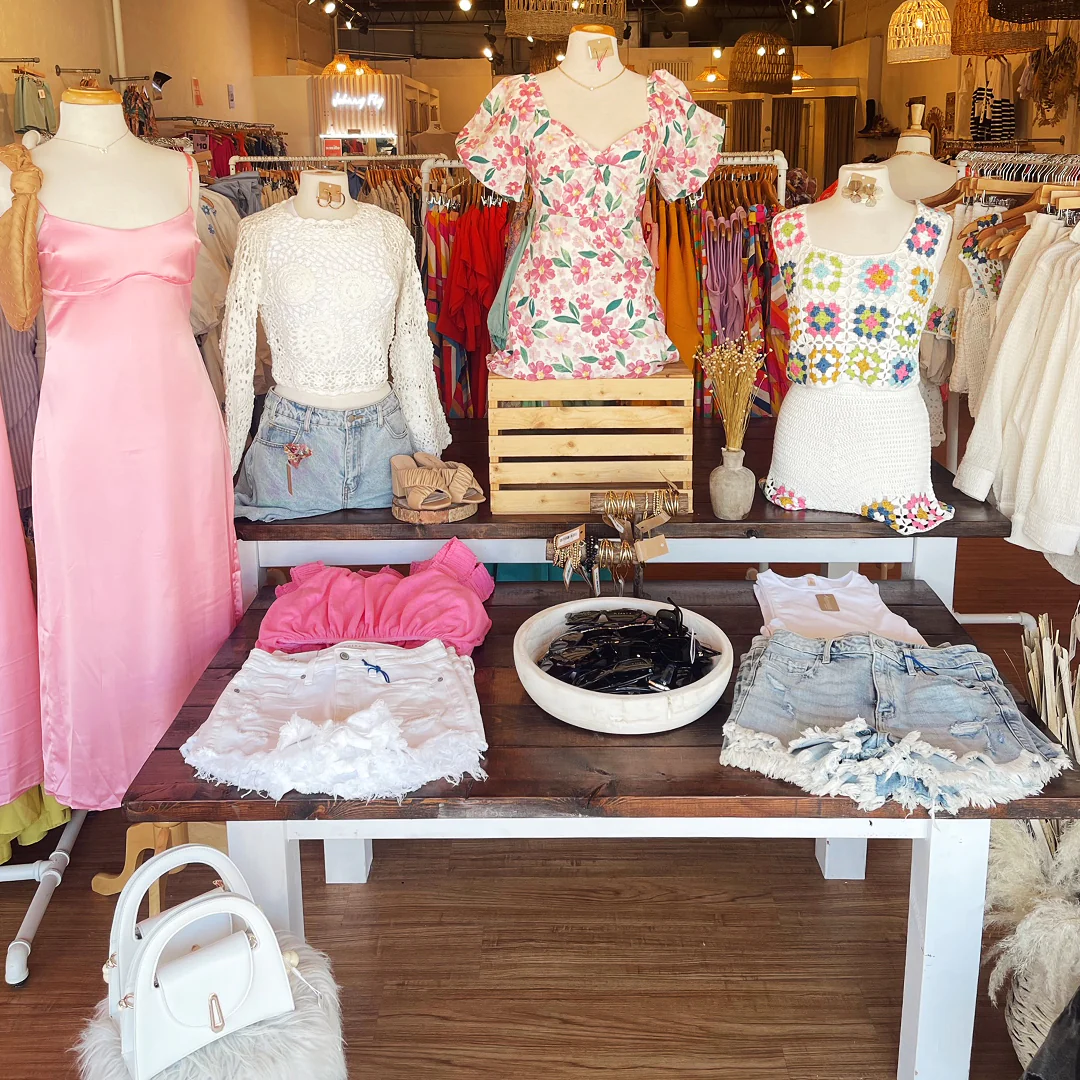The Rise of Online Shopping: Searching For Boutique Fashion at Your Fingertips
The Rise of Online Shopping: Searching For Boutique Fashion at Your Fingertips
Blog Article
Sustainable Fashion: Exactly How Eco-Friendly Apparel Is Forming the Future of Style
As the style market deals with enhancing scrutiny over its ecological influence, the increase of sustainable fashion supplies an encouraging option that lines up style with eco-friendly obligation. boutique fashion. Exactly how does this movement absolutely affect the future trajectory of fashion, and what challenges exist ahead in its widespread adoption?
Cutting-edge Lasting Materials
As the fashion market grapples with its ecological impact, ingenious lasting materials have arised as a critical option for lowering ecological footprints. These products not just reduce reliance on fossil gas yet also reduce unsafe pesticide usage and water usage.
Along with plant-based materials, developments in biofabrication have resulted in the advancement of lab-grown textiles. Mycelium leather, obtained from mushroom roots, provides a naturally degradable and flexible alternative to pet natural leather. Its manufacturing leads to significantly lower carbon discharges and water usage, making it a more sustainable alternative for designer looking for to line up with green practices.
Recycled products are also gaining traction, with polyester made from recycled plastic bottles standing for a considerable innovation. This innovation not only draws away plastic waste from oceans and landfills but additionally decreases energy intake contrasted to producing virgin polyester. Together, these materials underscore the possibility for a more lasting garment industry, leading the way for ecologically mindful style and manufacturing.
Eco-Conscious Production
Building on the innovations in lasting products, the style industry is also re-evaluating its production processes to even more reduce ecological impact. Secret strategies include lessening water consumption, minimizing carbon exhausts, and eliminating harmful chemicals.
Another important aspect is the reduction of toxic chemicals commonly made use of in dyeing and completing fabrics. Eco-conscious makers are moving in the direction of plant-based dyes and waterless dyeing technologies, which not only secure neighborhood communities but likewise boost worker security. Innovations like digital printing reduce fabric waste and power usage, using a cleaner alternative to standard methods.
With the improvement of blockchain technology, companies can currently offer thorough insights into their supply chains, making certain ecologically friendly and moral techniques at each step. As the need for eco-conscious items expands, makers are urged to innovate, guaranteeing that the future of fashion is both trendy and lasting.
The Increase of Upcycling
Upcycling, a transformative method in sustainable style, entails artistically repurposing discarded products right into brand-new, high-quality products. This cutting-edge method not only reduces waste yet likewise lessens the demand for basic materials, thereby reducing the environmental impact of clothing production. By reimagining and reconstructing existing things, designers and style brands are able to instill originality into their collections while advertising environmental duty.

Moreover, the upcycling activity has actually equipped local business and independent developers, that commonly lead in advancement because of their agility and creative thinking. By maximizing the plentiful availability of extra materials, these entities contribute to a round economic climate, demonstrating that style can be both elegant and sustainable. Through upcycling, the market takes significant strides in the direction of a much more aware and accountable future.
Thrift Culture's Impact
The expanding second hand society dramatically reshapes the landscape of lasting fashion, stressing the significance of conscious consumption. This social shift motivates customers to accept used garments, thus decreasing the need for new garment manufacturing and reducing ecological impact. Thrift purchasing not only prolongs the lifecycle of clothing however additionally lowers the carbon impact related to manufacturing, click here for more moving, and taking care of apparel.
A crucial aspect of thrift culture is its democratization of style. By offering a broad variety of designs from various ages at budget friendly prices, thrift shops make style accessible to a broader audience. This availability cultivates a sense of originality and creative thinking, as consumers mix and match distinct items to curate tailored closets without contributing to the fast fashion cycle.
Additionally, second hand culture promotes circularity in fashion, straightening with the concepts of a round economic situation. As even more customers and developers welcome second hand society, the style market is obliged to adapt, integrating lasting methods to satisfy the growing need for eco-conscious choices.

Future Trends in vogue
Fashion's evolution is significantly shaped by sustainability-driven efforts and technological advancements. As consumers end up being more ecologically conscious, the market is reacting with groundbreaking developments that redefine the future of design. One popular fad is the rise of electronic fashion, where online garments can be put on in augmented fact environments, substantially reducing material waste. This change not only accommodates the digital-savvy customer but likewise decreases the environmental footprint commonly associated with garment manufacturing.
Furthermore, the combination of blockchain modern technology supplies brand-new possibilities in openness and traceability, permitting customers to validate the sustainability qualifications of their clothing. boutique fashion. This ensures accountability in supply chains and promotes honest sourcing methods. 3D printing is yet one more advancement that guarantees to reinvent making procedures by allowing on-demand manufacturing, consequently lowering excess inventory and waste
Additionally, the growth of bio-fabricated materials, such as lab-grown leather and plant-based fabrics, offers lasting choices to standard products. These advancements decrease reliance on animal items and resource-intensive plants. As these innovations develop, they are poised to transform the style landscape, combining style with sustainability. The future of fashion, therefore, hinges on a smooth blend of technology, innovation, and eco-friendly obligation.
Conclusion
The makeover of the apparel industry via sustainable practices shows a critical change in the direction of environmental liability. my sources The combination of innovative products, eco-conscious manufacturing methods, and the embracement of upcycling and thrift society underscores a dedication to decreasing eco-friendly footprints. As these techniques acquire energy, they redefine the market's story by prioritizing moral and sustainable options. This evolution not only straightens fashion with eco-friendly sustainability but likewise sets a criterion for future patterns concentrated on responsibility and technology.
As the style industry deals with boosting analysis over its environmental effect, the increase of lasting style offers an appealing official site option that straightens design with ecological responsibility.As the fashion market grapples with its ecological influence, cutting-edge sustainable materials have emerged as an important remedy for reducing ecological footprints. Together, these materials underscore the potential for a much more sustainable fashion market, paving the way for ecologically mindful style and production.
Building on the developments in sustainable materials, the fashion market is likewise re-evaluating its manufacturing processes to even more decrease environmental impact. boutique fashion.Upcycling, a transformative practice in sustainable style, entails artistically repurposing disposed of materials into new, top quality products
Report this page